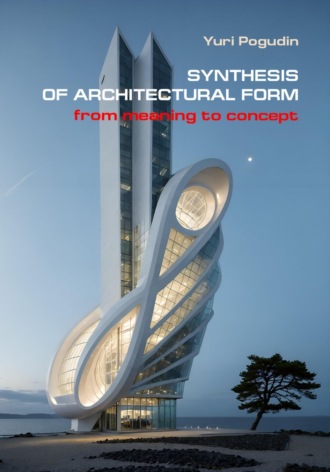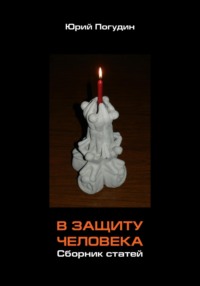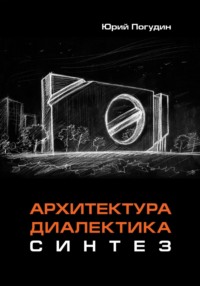
Полная версия
Synthesis of Architectural Form. From Meaning to Concept
It is possible to apply the dialectical triad to the construction of geometric forms, and to consider forms and their parts and qualities within an architectural composition as theses, antitheses and syntheses. A similar concept is the term "contrast", well-known in architectural propaedeutics. Contrast is the juxtaposition of thesis and antithesis, without combining them in synthesis (Fig. 1).

Fig. 1
In relation to the architectural field, the concept of synthesis undergoes, in A. F. Losev's terms, a meonal, other-worldly change. In the material world, in which architecture is created and lives, synthesis may not be given in full force, as in the purely conceptual field, but partly as a combination of opposites, when parts of forms and their properties are combined in a new form. In this respect, synthesis acts as an "in-between" between opposites, but nevertheless its unifying role does not lose its significance.
The formation of synthesis is a spasmodic movement – spasmodic because otherwise it is impossible to overcome the opposite, heterogeneous principles. In this way, it is fundamentally different from meter and rhythm, as movements that are homogeneous and quantitative, essentially uniform. As an example of homogeneous creativity, I recall the words of the hero from Robert Sheckley's fantasy story: "I knew for years that some other development was possible, starting from the square. I looked at it for a very long time. Its maddening sameness baffled and intrigued me. Equal sides, equal angles. For a while I experimented with varying the angles. The primal parallelogram was mine, but I do not consider it any great accomplishment. I studied the square. Regularity is pleasing, but not to excess. How to vary that mind-shattering sameness, yet still preserve a recognizable periodicity? Then it came to me one day! All I had to do, I saw in a sudden flash of insight, was to vary the lengths of two parallel sides in relationship to the other two sides. So simple, and yet so very difficult! Trembling, I tried it. When it worked, I confess, I went into a state of mania. For days and weeks I constructed rectangles, of all sizes and shapes, regular yet varied. I was a veritable cornucopia of rectangles!… To date, there are slightly more than seventy billion rectangular structures in the galaxy. Each one of them derives from my primal rectangle" [63, 196–197].
Конец ознакомительного фрагмента.
Текст предоставлен ООО «Литрес».
Прочитайте эту книгу целиком, купив полную легальную версию на Литрес.
Безопасно оплатить книгу можно банковской картой Visa, MasterCard, Maestro, со счета мобильного телефона, с платежного терминала, в салоне МТС или Связной, через PayPal, WebMoney, Яндекс.Деньги, QIWI Кошелек, бонусными картами или другим удобным Вам способом.
Примечания
1
State Budget-Funded Cultural Institution of Moscow "The Losev House – Scientific Library and Memorial Museum"
2
Dubai Expo 2021.
3
See the works of S. O. Khan–Magomedov: "Architecture of the Soviet Avant-Garde", Book 1 [23]; volume "Rationalism" from the trilogy devoted to the main trends of the Soviet architectural and artistic avant–garde [25].
4
About the heterogeneity of the world's space: "Coordinated separation in space will obviously require 1. the heterogeneity of space itself and 2. a certain system of these heterogeneous spaces. So, the synthesis of infinity and finiteness of world space is the figurativeness of this space." [3, 253]
5
"Newton's mechanics is based on the hypothesis of homogeneous and infinite space. The world has no boundaries, i.e. it has no form. For me, this means that it is formless. The world is absolutely homogeneous space. For me, this means that he is absolutely flat, inexpressive, and unpresentable. Such a world exudes incredible boredom." [3, 67]
6
"In classical art (from Antiquity to the 20th century), we can generally trace the dialectic of the beautiful and the ugly, the creation of harmony based on the dynamic unity of dissonances, and only from the second part of the 19th century and especially in the 20th century, from the avant-garde art, the weight of the ugly increases, and it transforms into a new aesthetic quality. Adorno sees the reasons for this in the thoughtless development of technology based on violence against nature and man. The "lack of freedom" of a new level – dependence on technology – is one of the main reasons for the triumph of the ugly in twentieth-century art. Relishing anatomical abominations, physical deformity, disgusting and absurd relationships between people (theater of the absurd, etc.) is the evidence of the impotence of the "law of form" in the face of ugly reality, but also an internal protest against it" [55, 69]. A.F. Losev's words about "the machine and machinism" are also in tune with this idea [3, 334-335].
7
See Guggenheim Virtual Museum Project, New York, USA, 1999-2002 [39, 289]
8
See [45, 81,85]. See also Parametricist Manifesto by P. Schumacher [68].
9
"Man is a verbal animated being" [13].











